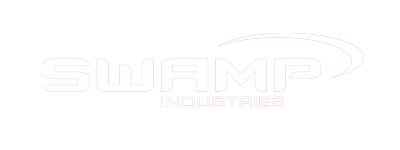About Audio Cables
Audio cables are essential in any sound system, transmitting signals between microphones, instruments, mixers, speakers, and recording equipment. At SWAMP, we offer a comprehensive selection of professional audio cables suitable for studio recording, live performance, broadcasting, and everyday use.
Our range includes:
- XLR cables – for balanced microphone and line-level connections. Known as microphone cables.
- TS (1/4") cables – unbalanced mono instrument cables, commonly used for guitars, keyboards. Known as guitar cables or guitar leads.
- TRS (1/4") cables – balanced cables suitable for line-level gear or stereo signals such as headphone outputs and insert points
- RCA cables – commonly used in DJ setups, home hi-fi systems, and older audio equipment
- Digital audio cables – including AES/EBU, SPDIF (RCA), and Toslink optical for transmitting digital audio with minimal interference
- Multicore / Snake cables, 3.5mm AUX cables, insert leads, Y-splitters, and adaptors – for flexible routing and stage or studio patching
- Connectors – we stock a range of high-quality connectors including genuine Neutrik and REAN parts for DIY and custom cable builds
We stock a range of trusted audio cable brands to suit different needs and preferences. In addition to our in-house SWAMP cables, we carry premium options from Mogami, known for top-tier studio and broadcast performance. Ernie Ball offers stylish and durable instrument cables, including braided designs with eye-catching finishes. Pig Hog is a newer addition to our lineup, offering unique aesthetics and tough construction for musicians who want their cables to stand out as much as their sound.
SWAMP offers a range of in-house audio cables built to meet different needs and budgets:
- Stage Series uses SMC-208 spiral-wrapped shielded cable and genuine REAN connectors from Neutrik’s Ningbo factory. Spiral shielding provides extra flexibility, making these ideal for stage use and live performances. This is our go-to cable range, and we stock it in a wide variety of lengths.
- Pro-Line Series features SMC-203 cable with a braided shield for maximum noise rejection. Though slightly less flexible than spiral shielding, these cables excel in studio and critical listening environments. They use genuine Neutrik AG connectors manufactured in Europe for dependable, long-term performance.
- Head-Line Series combines Canare L-2T2S cable, renowned for its flexibility, durability, and ultra-low handling noise, with Neutrik XX-B series connectors—featuring gold contacts and a robust black finish. This series is ideal for high-end stage, studio, and broadcast use.
- Budget and Classic series use the same SMC-208 cable as the Stage Series but with generic (non-branded) connectors. These are cost-effective solutions suited to general-purpose use where budget is a priority.
All SWAMP cables are hand-soldered to a high standard by skilled technicians, ensuring consistent signal transfer and long-term reliability. Whether you're wiring a home studio, setting up for a gig, or building a professional install, our cables deliver dependable performance. If you're unsure about which cable or connector type suits your needs, our guide to analog audio signal types and connectors explains the differences between balanced and unbalanced signals, mic and line level signals, shielding methods, and how various connectors are used in audio setups.






















































































